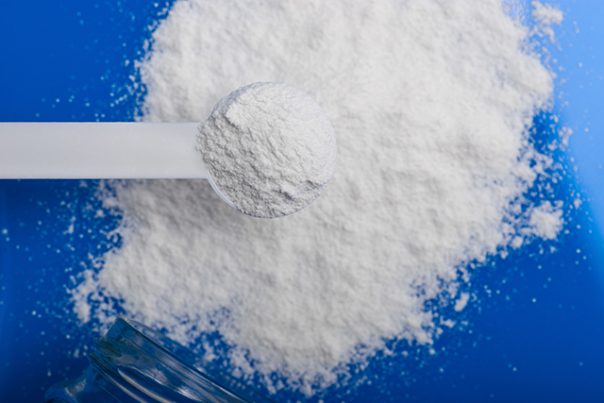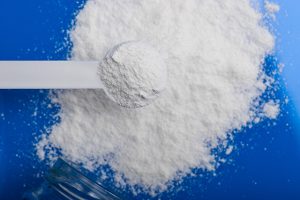
Potassium carbonate sources, health risks
Tuesday, October 17, 2017 by Frances Bloomfield
http://www.naturalpedia.com/potassium-carbonate-sources-health-risks.html

Potassium carbonate, also known as pearl ash or salt of tartar, is a white powder with a salty taste. Originally, potassium carbonate was the byproduct of heating potash in a kiln to remove any impurities. Nowadays it can be synthetically created by exposing potassium chloride to a direct electrical current, then carbonating the resulting potassium hydroxide.
Once used as a leavening agent prior to the creation of baking powder, potassium carbonate is now widely used to make glass and soaps such as soft soaps and dishwasher soaps. Potassium carbonate continues to have culinary uses that include being utilized as an ingredient in cocoa powder and German gingerbread.

Harmful effects that can be caused by potassium carbonate
The ingestion of this compound can result in potassium carbonate poisoning, the symptoms of which include:
- Burning in the mouth and throat
- Diarrhea
- Drooling
- Severe mouth, throat, and abdominal pain
- Throat swelling
- Vomiting, often with blood
In the most extreme cases, collapse may come about due to the sudden drop in blood pressure. Moreover, swallowing potassium carbonate puts the body at risk of absorbing it. Potassium by itself can slow down the pulse and cause heart rhythm to become irregular. Fortunately, acute potassium poisoning after swallowing is relatively rare since vomiting typically occurs after. However, vomiting should never be induced as this doubles the chances of burning the throat and may cause the body to absorb potassium carbonate in larger amounts at a quicker rate.
Inhaling potassium carbonate can cause respiratory irritation. While non-volatile in nature, potassium carbonate is especially dangerous to persons with impaired respiratory function or respiratory diseases like chronic bronchitis or emphysema because it can worsen the symptoms of these diseases. Long-term exposure to potassium carbonate can even lead to respiratory diseases wherein the symptoms include difficulty breathing. Higher concentrations of potassium carbonate are considered a major risk factor for pneumoconiosis, a lung disease that results from dust inhalation and is marked by coughing, inflammation, and fibrosis or the scarring and hardening of lung tissue.
Potassium carbonate is highly irritating to the skin and may bring about inflammation on direct contact. It is especially dangerous for persons with pre-existing dermatitis conditions since potassium carbonate can further aggravate their skin problems. The same applies to open cuts and irritated or abraded skin; potassium carbonate can enter the bloodstream through open wounds and may bring systemic injury or poisoning into being. Furthermore, moist skin is at great risk of skin corrosion and accelerated tissue destruction.
In addition, potassium carbonate can irritate the eyes, Prolonged exposure can lead to severe conjunctival irritation and chemosis, limbal ischemia, permanent corneal damage and perforation, and even blindness. Eye disorders that reduce tear production or decrease the integrity of the eye can be exacerbated by potassium carbonate.
Body systems harmed by potassium carbonate
Potassium carbonate can cause acute toxicity when inhaled or ingested, making it harmful to the respiratory and digestive systems. It’s considered a contact hazard for the skin and eyes, and should never be directly exposed to both.
Where to learn more
Summary
Potassium carbonate is a compound that can be harmful to the skin, eyes, respiratory, and digestive system when exposed to any of these, regardless of the amounts of potassium carbonate. Ingesting this compound can cause one’s blood pressure to drop suddenly and can bring about collapse. Inhaling potassium carbonate can aggravate existing respiratory conditions and even cause one known as pneumoconiosis. Direct contact with potassium carbonate can intensify the symptoms of skin problems and eye disorders, while also increasing the risk of skin corrosion or particular eye disorders.
Sources include:
WorldOfChemicals.com
MedlinePlus.gov
CDC.gov
Datasheets.SCBT.com
Tagged Under: Tags: Potassium carbonate





